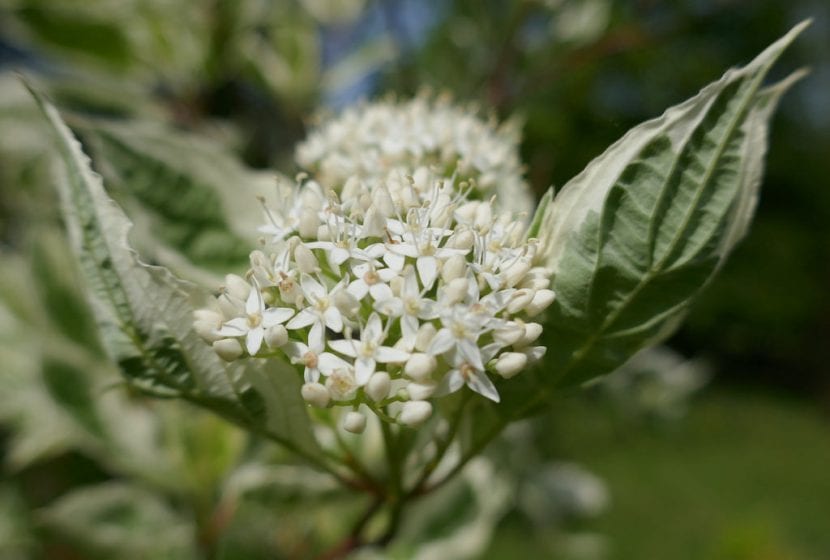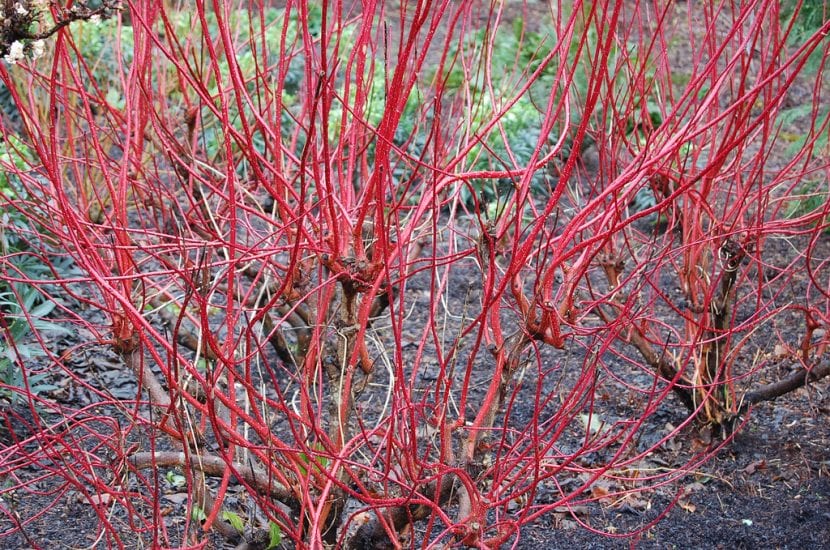
Image - Flickr / Bernard Blanc
El cornus alba It is the typical bush that you see once, and you no longer forget it. It is a plant that is beautiful all year round: when it is not for its white flowers, it is for its leaves that change color; and when it is not for that, its reddish stems stand out from the rest of the plants during winter.
If we add to that that it can grow as a shrub or as a tree, we already have an ideal species to grow in any corner. But beware: so that no problems arise, it is important to know your preferences. So let's go there 🙂.
Origin and characteristics

Image - Wikimedia / Krzysztof Ziarnek, Kenraiz
It is a deciduous shrub or tree native to North America that reaches a maximum height of 3 meters, and which is known as dogwood or white dogwood. The leaves are opposite, oval in shape, dark green or with white margins if it is a cultivar. These turn reddish in autumn.
Blooms in spring. The flowers are grouped in terminal inflorescences, and are white. The fruit is rounded, white or slightly blue, and measures approximately 1cm.
Cultivars
There are many cultivars, and they are likely to be creating more and more. These are just a few:
- Very elegant: it has branches of red wood.
- Flaviramea: has branches of yellow wood.
- Magic flame: it has branches of red wood.
- Sybirica: it has branches of red wood.
What is the care for Cornus alba?

Image - Flickr / basswulf
If you want to have a copy, we recommend you take care of it as follows:
- Location: it must be outside, in full sun or in semi-shade.
- Earth:
- Pot: fill with substrate for acidic plants, like the one you can find here.
- Garden: tolerates lime, but will have better color and growth in acidic soils.
- Irrigation: frequent, especially in summer. Water about 3-5 times during the warmest season of the year, and about 2 times a week the rest.
- Subscriber: in spring and summer it is advisable to fertilize with fertilizers for acid plants following the indications specified on the packaging.
- Multiplication: by seeds and cuttings in spring.
- Pruning: late winter.
- Rusticity: it resists frosts down to -12ºC.
Enjoy your plant! 🙂